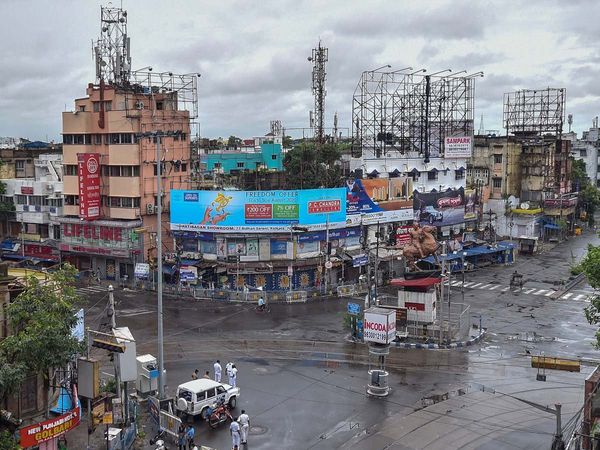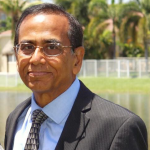
 Bengal, after many decades, now seems to be saying that it is changing, but also very much wants to be a significant part of an India that is changing in a rapid way
Bengal, after many decades, now seems to be saying that it is changing, but also very much wants to be a significant part of an India that is changing in a rapid way
By Nazarul Islam
There is no denying the fact that without the aid of Bengal, and the overflowing wisdom of its people, India would only be functioning with major handicaps. From the lofty pedestal of scientists, administrators and managers down to the factory worker, the state’s people are clever and skillful.
Today, their talents are being wasted for lack of opportunities. Perhaps these human assets were destroyed as the state fell from being India’s industrial jewel, to the lamentable state of the graveyard of industry.
I believe that a Bengali can operate the domain of information technology with as much ease and skill, as say, people in the southern Indian states. But where is the environment that would give such opportunities to the young men and women of Kolkata, or in the remaining state of Bengal?
West Bengal could also be the education hub for the region stretching from UP in the west to Assam in the east, including Bihar, Nepal and Bangladesh. Bengalis still value learning and at their best, are excellent teachers. A school or college/university would cost approximately no more than Rs.25 crore each. Similarly, professional management should be used to tone up all hospitals with two objectives in mind ~ one, to enable medical colleges to be developed at the side— and secondly, wherever possible, help attracting medical tourism.
This again, would not need incurring expenses to the tune of Rs.25 crore per establishment or perhaps a little more. The World Bank can provide the finance provided the state government can give guarantees. The setting up of heavier industries would entail disadvantages. For instance, units would have long gestation periods, having to compete with the rest of the world, apart from needing thousands of crores of rupees in investment.
The Himalayan mountain range are God’s gift to the northern Bengal, with greater potential for tourism than perhaps—even Switzerland. However, what is required is an infrastructure for attracting tourists.
There is space for laying out an international airport in Bagdogra. What probably is necessary is to invite a couple of international airlines and hotel chains and provide them some undertakings and help for the initial stages, whereby with passage of time, they can deliver the rest.
Not everyone knows that from Sandakphu at 12,000 feet ~ not far from Darjeeling ~ one can view Mount Everest all day, given a clear sky. Mt. Kanchenjunga and several other mountain ranges are visible from Darjeeling, a hill station town that is in need of a qualitative upgrade. The employment potential of such development would also be considerable. It does not matter which party or ideology brings these changes in its train, so long as it delivers the goods.
After independence, West Bengal was ruled by Nehruvian socialism. Thereafter, the United Front, a hotchpotch of parties and then the Left Front led by the Communist Party of India (Marxist), i.e., the CPM, which meant Marxist rule, came to power. These were foreign ideologies, which did not help economic development.
We have now had ten years of the Trinamool Congress (TMC), with a daughter of Bengal as its leader.
Mamata Banerjee calls the BJP an ‘outsider’. Being comparatively young, she may not be aware that the BJP’s previous avatar the Bharatiya Jana Sangh (BJS) was conceived on Cornwallis Street in Kolkata.
There, Guru Golwalkar, head of the Rashtriya Swayamsevak Sangh (RSS) had a meeting with Dr. Syama Prasad Mookerjee of the Hindu Mahasabha, whose resolute leadership had prevented all of Bengal becoming Pakistan.
At this Cornwallis Street meeting, it was decided to form a political arm of the indigenous political ideology, Hindutva. Dr. Mookerjee would lead this political arm, and to help him in this task, the RSS would provide him two stalwarts per province. The political ideology of Hindutva is about the only one that has risen from the soil of Asia. All the ‘isms’ whether capitalism, socialism, communism or fascism, were born and bred in Europe.
If therefore, anyone is an outsider, it is these ideologies. Uncannily, the term ‘Hindutva’ was first pronounced in 1863 by Rajnarain Bose, the maternal grandfather of Sri Aurobindo Ghosh. The aggressive Hindu Anushilan Samiti was led by Sri Aurobindo when the 1905 partition of Bengal took place. Gurudev Rabindranath Tagore was a leading light of the Samiti, which organized the agitation against this partition so effectively that Emperor George V annulled it in 1911.
Thereafter, Bengal’s leaders began taking a sympathetic view of the Muslims for having lost their new province of East Bengal and Assam. In the bargain, the Muslims were treated more gently. Being Bengali became more important than being Hindu. Nevertheless, during the era of the freedom movement, Bengal sent out tall national leaders, namely individuals like Deshbandhu Chittaranjan Das and the redoubtable Netaji Subhas.
Bengali leaders did not confine themselves to the eastern corner of the India, but played on the all India field. These glories can be revived again. Incidentally, Bengal has contributed in no small way to the growth of Hindi. Apart from being the pioneer of a number of Bengali newspapers, the great scholar and reformist leader Raja Rammohan Roy also encouraged journalism in Hindi, leading to the publication of Hindi journals like Samvad Chandrika. Roy also wrote Hindi in the Devanagari script.
In fact, the saga of Hindi journalism begins from Bengal with the first ever Hindi newspaper Udant Martand published in Calcutta in 1826. Sarat Chandra Chattopadhyay, the highly popular Bengali novelist of the early 20th century is as widely read outside Bengal as he is in his home state. In fact, Sarat Chandra remains the most popular, translated and adapted Indian writer of all time.
And how can one forget Bankim Chandra Chattopadhyay, whose magnum opus Ananda Math and its invocation to the Mother Divine, the soul-stirring “Vande Mataram”? Vande Mataram not only became the inspirational fountainhead for Indian patriots during the independence movement, but in later decades, also became the war cry for Hindu nationalism, which burst forth with renewed vigour with the launch of the Ram Janmabhoomi movement in the 1980s.
Ironically or otherwise, Vande Mataram, and also the politico-religious opposition to it, became a fulcrum of the growing sentiment of nationalism. It is highly likely that a bhadralok promoted Bengali exceptionalism grew in direct proportion to the decline of West Bengal, but such exceptionalism never became a mass phenomenon, not even in the heyday of ‘progressive’ Left rule. West Bengal’s identity remains rooted in religiosity.
The electoral tussle of 2021 however, apart from its headline grabbing daily heat and thunder, also indicates that a yearning, albeit a silent one, to be more integrally a part of the national mainstream is coming into play. This is at it should be for a state that provided the paradigm for modern Indian nationalism.
Bengal, after many decades, now seems to be saying that it is changing, but also very much wants to be a significant part of an India that is changing in a rapid way. Even as we shall be furiously debating and dissecting every aspect of the current assembly elections in the state, the dictum of China’s late leader Deng Xiao Ping,
“The color of the cat does not matter, so long as it catches mice” Obviously, this should be borne in mind, by all…
___________________
About the Author
